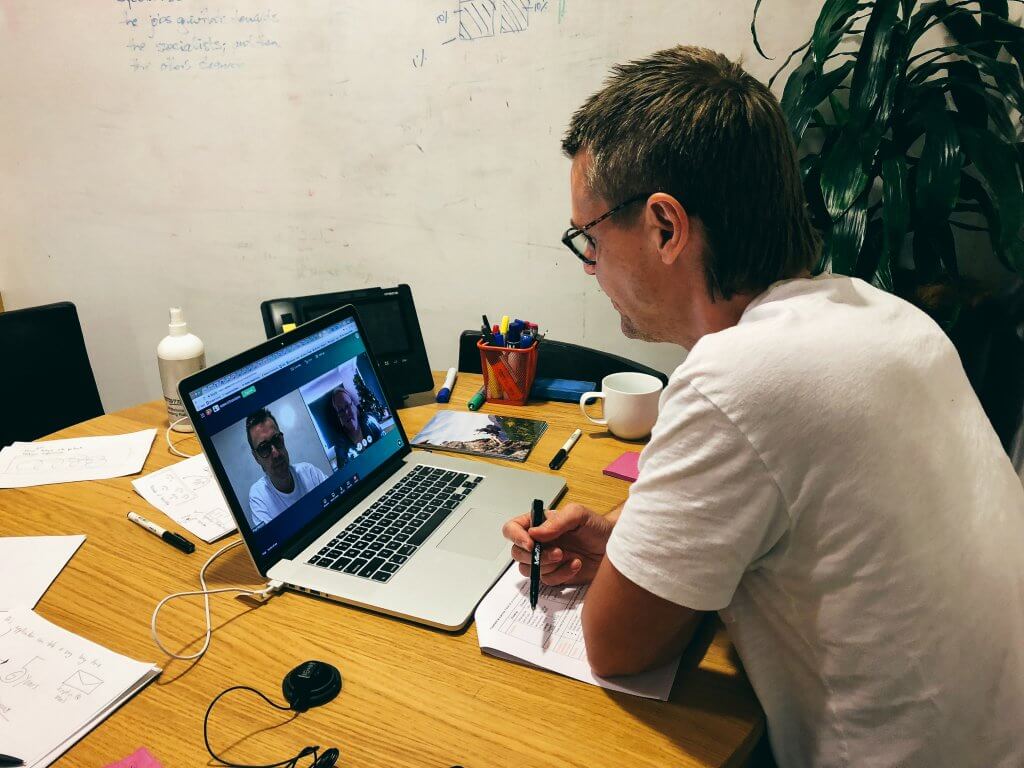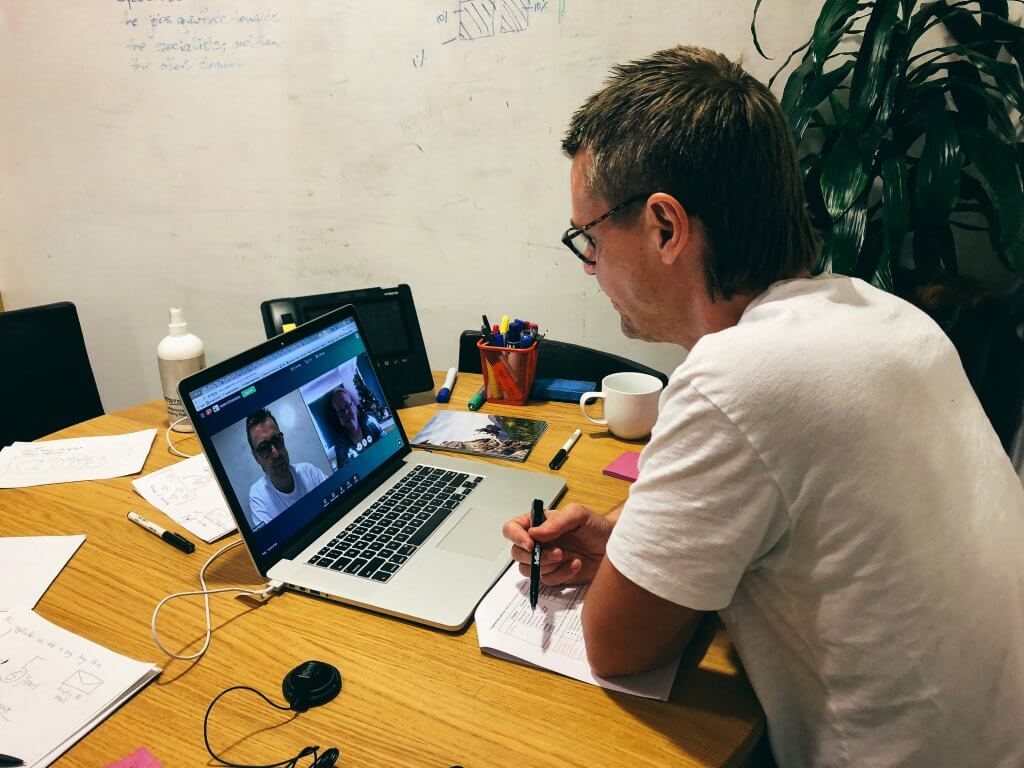Six principles for working together when we’re not physically together


“Designing better futures, together” is our mantra. It’s the best way for us to meet our mission to improve the everyday lives of people as they interact with the world around them. No matter what we’re designing, the emphasis is on designing things together, with the people who will be directly impacted by the decisions made and with people who have expertise and perspective to bring to the opportunity.
This means that all steps of our design work require some aspect of togetherness, be it with other Meldsters, subject matter experts, our clients, their customers or with their internal teams. This is not just about generic ‘collaboration’ meaning we can work on something at the same time; this is about connection, empathy, co-creation, shared activities and collective action.
If being ‘together’ is so important to our way of working, what happens when we can’t literally be physically together?
We know that we can’t fully replicate the in-person experience, and we’re not trying to. We want to find ways to mimic the key attributes of in-person togetherness and also find things that are unique to being apart.
We follow these six principles to be connected:
-
If one person is remote, we’re all remote
Have you ever been the sole person on video or on the phone while everyone else is in person? How many times has someone said, “Oh, I forgot you were there!”
We were experiencing this between our Sydney and Melbourne studios, so we decided to shift everyone to logging in on their own device. This way we supported equity to access around what is being said, the ability to individually respond, and clarity of sound and view.
We also use Slack to share company-wide messages, even if shared in person, because not everyone is always in person. This helps with asynchronous information sharing.
-
Start with the tools we have
While most organisations have some aspect of collaboration tools, there is not always a clear guide for how they should be used or how ways of working needs to change to make the most effective use of them. It is important also to acknowledge that a group session via video will have different characteristics to an in-person session, and that the point of remote communication and collaboration tools is not to replicate being in-person. Rather, the purpose is to allow for collaboration between people irrespective of their location. Better yet, remote collaboration also allows us to think of ways in which people can work together at different times (i.e. asynchronously).
We need to ensure that everyone can access the tools we’ll be using. Provide people with an opportunity to trial any remote collaboration or communication too before they need it. Have a technician on-hand to help work through any set up issues that might arise, and do this for both internal and external collaborators.
Recognise that overcoming network access while remote and getting new tools quickly may be constrained by the size of your organisation and IT capability. This is why we always start with what we have, to see if we can make the tools of today work for us in new ways.
-
Provide examples of how to use tools for specific purposes
It’s clear that just having the right tools does not unlock the mindset and work practices needed to get the most out of them (Also see: Every digital transformation program of work ever taken on).
Remote work out of necessity becomes an unfreezing moment where new ways of working can really start to take hold. We’ve seen this trend play out in many workplaces over the last decade - through mobility solutions and Activity Based Working - but they’re often intended for the exception rather than the rule. What we’re seeing at the moment, and what will increasingly be the case over the coming weeks, is a heavy reliance on remote work as the default way of working.
We need to think about ways of leveraging what we’ve learned from this past decade to help people new to remote work quickly become productive. Using what you already have, start to demonstrate to others how you might take the activities you do in person and replicate the most critical aspects of that using the tools you have.
-
Be clear on why we are meeting
Do we really need to sit in a room - especially if it's a digital room - for an hour talking things over and over? Are we trying to make decisions? Generating ideas together?
Be clear about the different types of conversations and activities that you need to have, and an appropriate time of day/week to have those conversations. Set up 30 minute sessions with a clear agenda and facilitator. Provide any context/pre-reading in advance.
For example:
- 9am daily check in / stand up: what's our company or team level message for tomorrow, what are we each focussing on, help, blockers, when are we reconnecting…
- 15-30 min slots ranging from playful sessions to serious discussions and decision making meetings
- Virtual tea or lunch breaks to keep connected on a personal level
- End of week reflection session
-
Be realistic and honest about our availability
Be realistic about how productive you will be when working from home; especially if you're home with little ones or sick ones. Clock time that's work vs. personal/sick leave vs. other time out; and don't feel guilty about it. Structure your team sessions around your genuine availability. It's better for business that you're productive when you can be and how you can be than trying to fill or fudge hours.
Perhaps more importantly, by creating this disconnection between the workplace and work, we can blur the boundaries of the 9-5 work day, and allow people to be productive in a more flexible way. That’s not to say we find ways to increase the number of hours staff are working! Not at all. But if we’re putting in place tools that allow for effective, remote, asynchronous collaboration, then we’re also opening up the possibility for people to contribute at the times of day that work best for them and their families, without it coming at the expense of organisational effectiveness.
-
Be human
When we talk about working in a distributed way, it can feel like a lot of emphasis is put on effectiveness and efficiency. While all of that is true, we know that true togetherness is around connection at a human level. We check in and have a chat before diving into the work itself. If we’re having to work together remotely for a while, we need to stay bonded while apart or else work can feel mechanical and uninspiring. Don’t forget to find ways to break out of the meeting grind and say hi to your fellow colleagues. True connection is the key.
--------
Remote work has been with us for a long time and we know a lot about how to make effective use of people irrespective of their location. Many of the tools we already use in business and in our personal lives can be deployed to create distributed, productive teams. Following these six simple principles can help move your team from a reliance on face-to-face work to effective, remote collaboration, and allow you all to continue being productive and connected even as our daily routines become disrupted.
We’re building a list of tips and tricks on Creating Togetherness while working remote that we’d love to share with you. Share what you're learning and together we can get through this massive shift.
